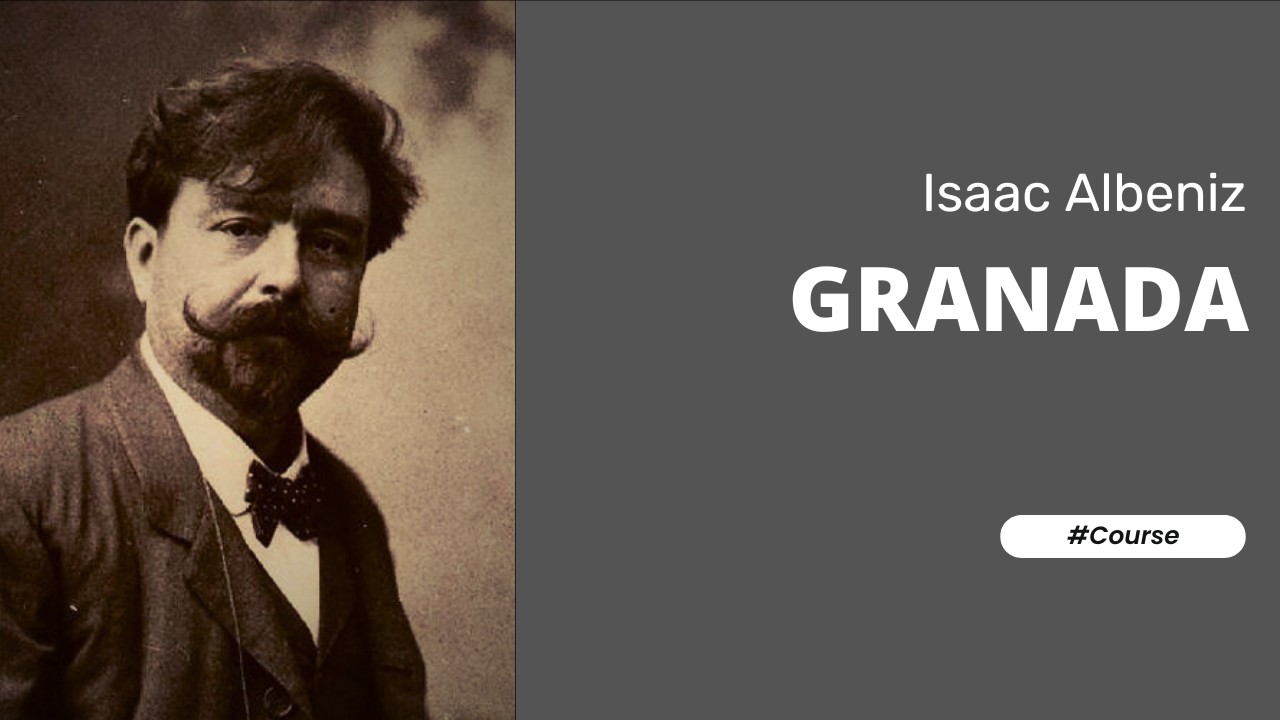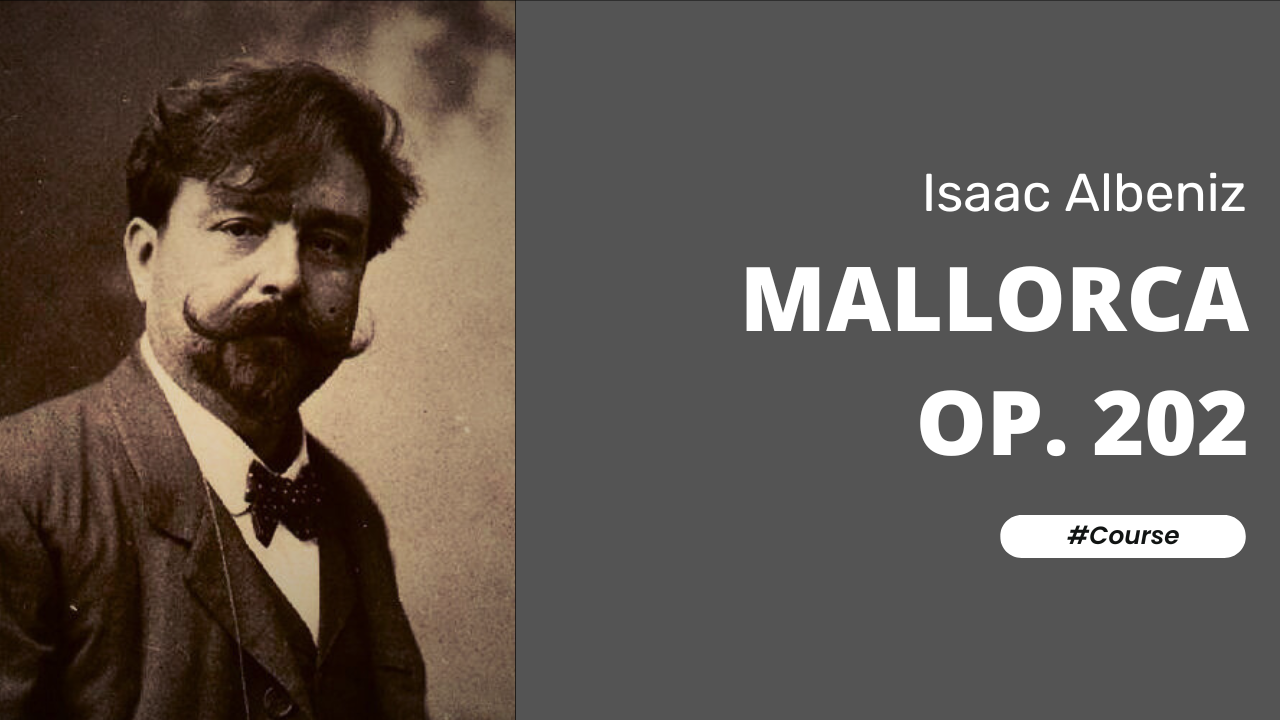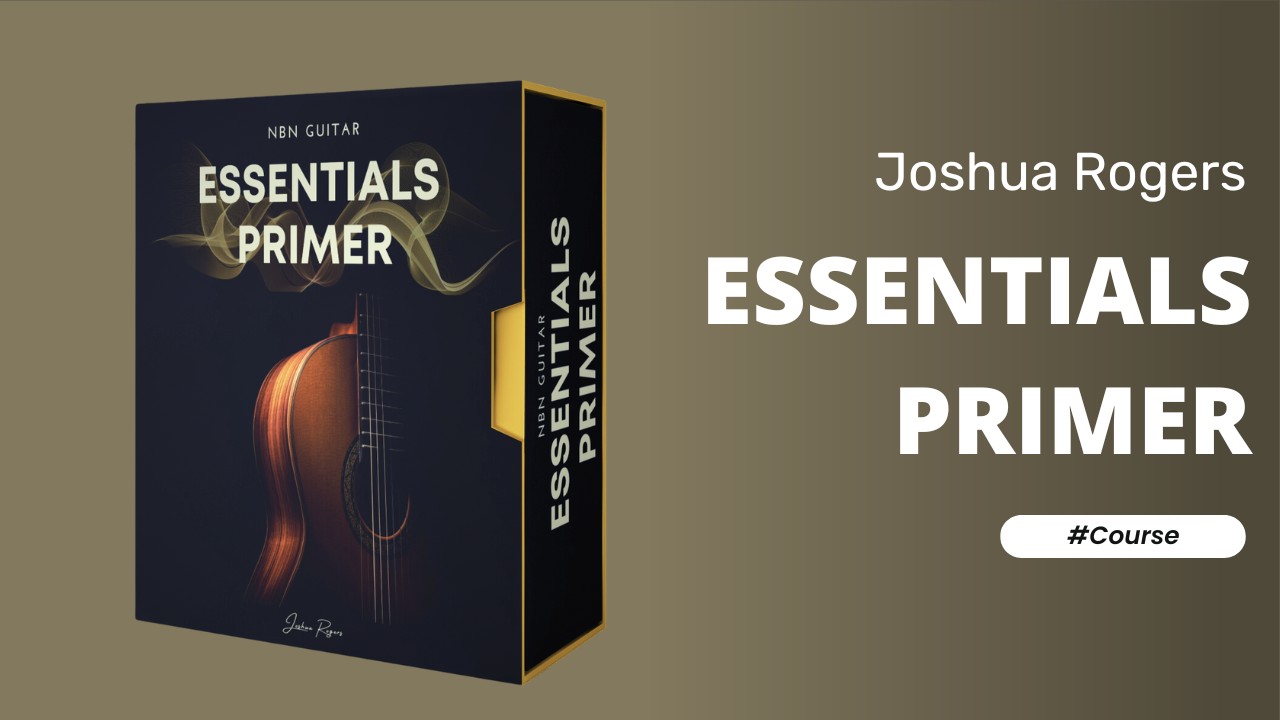Asturias ‘Leyenda’ by Isaac Albeniz
Introduction
“Asturias” composed by Isaac Albéniz, is one of the most iconic pieces in the classical guitar repertoire, despite originally being written for piano. Albéniz, a prominent Spanish composer of the late 19th and early 20th centuries, is celebrated for his works that vividly capture the essence of Spanish folk music. “Asturias” is no exception, evoking the passion and spirit of the Andalusian flamenco tradition.
When transcribed for classical guitar, “Asturias” takes on a new life, with the guitar’s natural percussive and expressive capabilities perfectly suited to the piece’s rhythmic drive and melodic intensity. The composition begins with a hauntingly beautiful, almost melancholic theme that is followed by rapid, fiery arpeggios and dynamic contrasts, mimicking the style of flamenco guitarists.
Playing “Asturias” requires not only technical proficiency but also a deep understanding of its emotional and cultural context. The guitarist must skillfully navigate the piece’s complex finger work, sudden tempo changes, and rich harmonic textures to convey its full character. This piece demands precision, agility, and a strong sense of rhythmic vitality.
“Asturias” offers guitarists a chance to explore the rich traditions of Spanish music through Albéniz’s masterful composition. Its vibrant energy and dramatic flair make it a thrilling and rewarding piece to perform, embodying the fusion of classical formality and folkloric exuberance that defines much of Albéniz’s work.
In this series comprised of three video lessons I will give you performance tips and ideas to play Asturias with feeling and technical proficiency. These guitar lessons will also show you every note including chords, left and right hand fingering, harmonics, ponticello, tonal shaping, and much more.
Key Points:
-
The original piece was written for piano in the key of G minor
-
The guitar transcription is in the key of E minor (a minor 3rd lower than the original)
-
Whilst not a flamenco piece per se it shares some characteristics such as rasguedos, intense rhythmic and harmonic content consistent with the sound of flamenco and is likened to the Bulería of Andalusia
-
Marcato and Stacatto indications throughout reflect the rapid footwork of a flamenco dancer
-
Stay relaxed especially in the opening stanzas with the picking hand
-
Use P I M and P I A right-hand picking for various sections in the opening stanza
-
Try to utilise ‘full planting’ in the right for the rapid triplet lines in the A section
-
Make maximum use of dynamics and remember that sforzando is common in this piece and essential to bringing the vibrancy to life
-
Don’t take too many liberties with the timing in the A section. Bulería is a dance and as such rubato is frowned upon
-
The B and Capo sections can be played more freely and loosely with respect to rhythm.
Musical Style
Isaac Albéniz’s musical style is deeply rooted in the Romantic tradition, infused with vibrant elements of Spanish folk music. His compositions often incorporate rhythms and modes characteristic of Andalusian flamenco, creating a rich tapestry of sound that evokes the landscapes and culture of Spain. Albéniz’s music is known for its lyrical melodies, intricate harmonies, and dynamic contrasts. He skillfully blends classical forms with folk influences, producing pieces that are both technically challenging and emotionally expressive. Albéniz’s piano works, many of which have been transcribed for guitar, remain staples in the repertoire for their evocative and distinctive Spanish flavor.
Notable Pieces
Five notable pieces by Isaac Albéniz:
• Asturias (Leyenda)
• Sevilla
• Granada
• Córdoba
• Tango in D
Let your fingers fly!
Josh
Course Instructor
Asturias Course
Learning how to play Asturias
About this Course
Introduction
“Asturias” composed by Isaac Albéniz, is one of the most iconic pieces in the classical guitar repertoire, despite originally being written for piano. Albéniz, a prominent Spanish composer of the late 19th and early 20th centuries, is celebrated for his works that vividly capture the essence of Spanish folk music. “Asturias” is no exception, evoking the passion and spirit of the Andalusian flamenco tradition.
When transcribed for classical guitar, “Asturias” takes on a new life, with the guitar’s natural percussive and expressive capabilities perfectly suited to the piece’s rhythmic drive and melodic intensity. The composition begins with a hauntingly beautiful, almost melancholic theme that is followed by rapid, fiery arpeggios and dynamic contrasts, mimicking the style of flamenco guitarists.
Playing “Asturias” requires not only technical proficiency but also a deep understanding of its emotional and cultural context. The guitarist must skillfully navigate the piece’s complex finger work, sudden tempo changes, and rich harmonic textures to convey its full character. This piece demands precision, agility, and a strong sense of rhythmic vitality.
“Asturias” offers guitarists a chance to explore the rich traditions of Spanish music through Albéniz’s masterful composition. Its vibrant energy and dramatic flair make it a thrilling and rewarding piece to perform, embodying the fusion of classical formality and folkloric exuberance that defines much of Albéniz’s work.
In this series comprised of three video lessons I will give you performance tips and ideas to play Asturias with feeling and technical proficiency. These guitar lessons will also show you every note including chords, left and right hand fingering, harmonics, ponticello, tonal shaping, and much more.
Key Points:
-
The original piece was written for piano in the key of G minor
-
The guitar transcription is in the key of E minor (a minor 3rd lower than the original)
-
Whilst not a flamenco piece per se it shares some characteristics such as rasguedos, intense rhythmic and harmonic content consistent with the sound of flamenco and is likened to the Bulería of Andalusia
-
Marcato and Stacatto indications throughout reflect the rapid footwork of a flamenco dancer
-
Stay relaxed especially in the opening stanzas with the picking hand
-
Use P I M and P I A right-hand picking for various sections in the opening stanza
-
Try to utilise ‘full planting’ in the right for the rapid triplet lines in the A section
-
Make maximum use of dynamics and remember that sforzando is common in this piece and essential to bringing the vibrancy to life
-
Don’t take too many liberties with the timing in the A section. Bulería is a dance and as such rubato is frowned upon
-
The B and Capo sections can be played more freely and loosely with respect to rhythm.
Musical Style
Isaac Albéniz’s musical style is deeply rooted in the Romantic tradition, infused with vibrant elements of Spanish folk music. His compositions often incorporate rhythms and modes characteristic of Andalusian flamenco, creating a rich tapestry of sound that evokes the landscapes and culture of Spain. Albéniz’s music is known for its lyrical melodies, intricate harmonies, and dynamic contrasts. He skillfully blends classical forms with folk influences, producing pieces that are both technically challenging and emotionally expressive. Albéniz’s piano works, many of which have been transcribed for guitar, remain staples in the repertoire for their evocative and distinctive Spanish flavor.
Notable Pieces
Five notable pieces by Isaac Albéniz:
• Asturias (Leyenda)
• Sevilla
• Granada
• Córdoba
• Tango in D
Let your fingers fly!
Josh
Course Instructor
Asturias Course
Learning how to play Asturias




